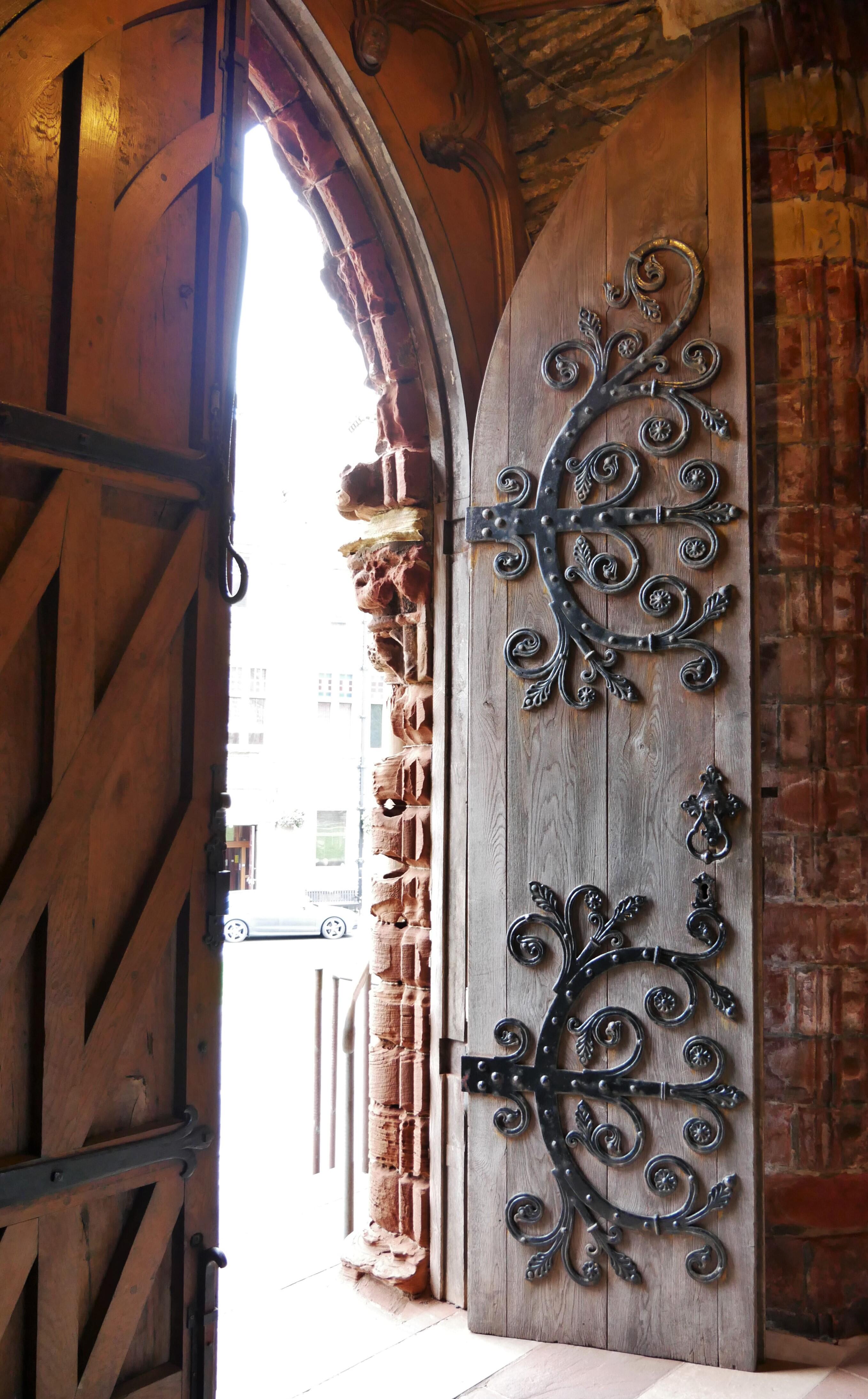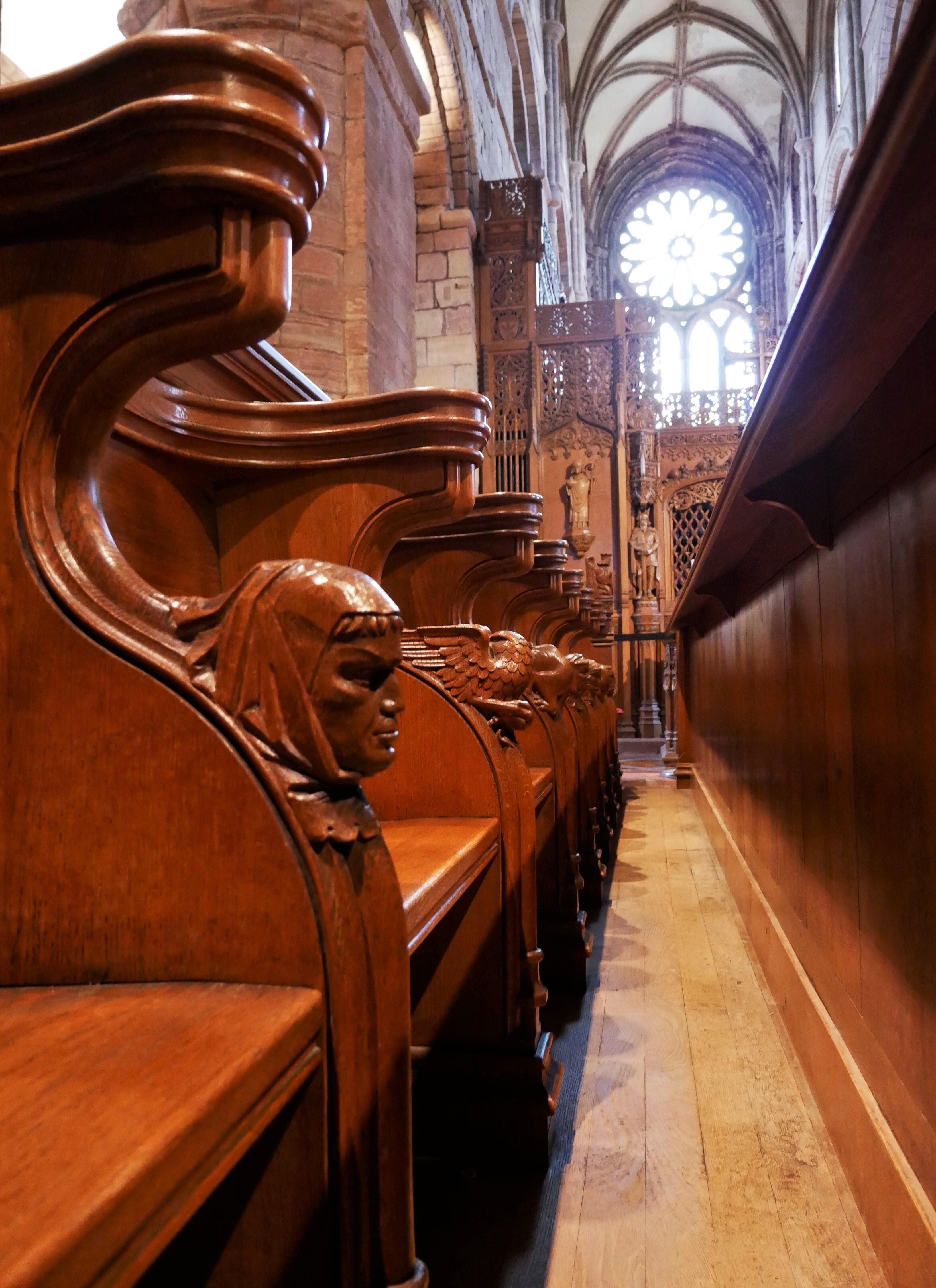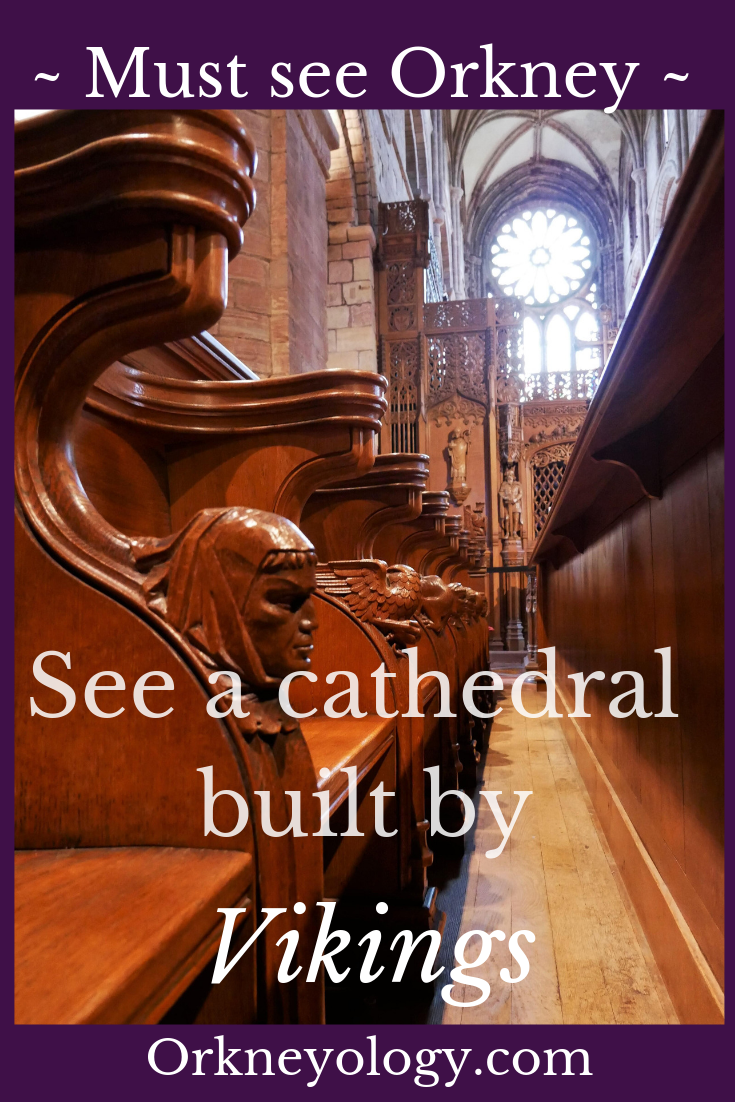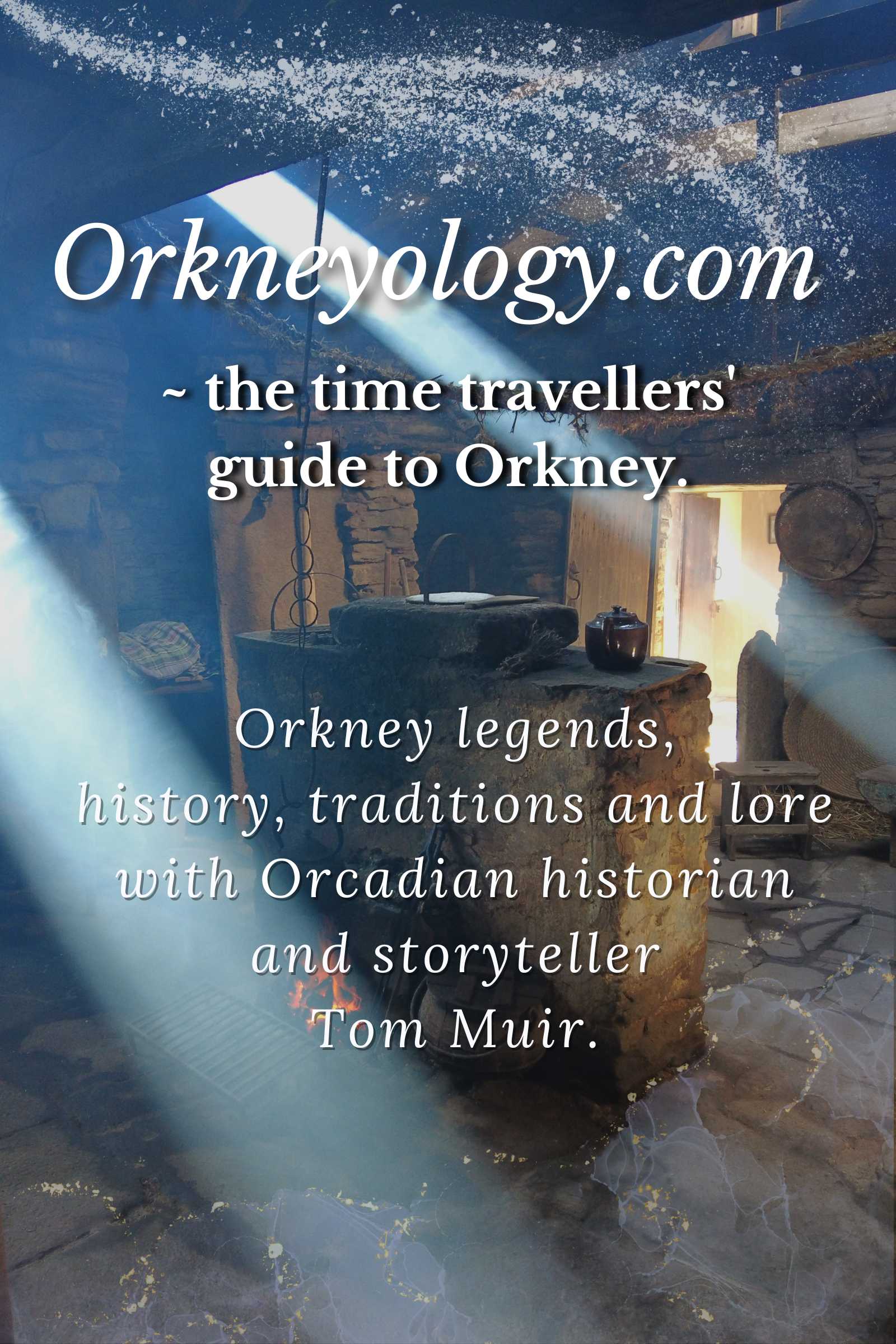St Magnus Cathedral -
Orkney's 'Light in the North'
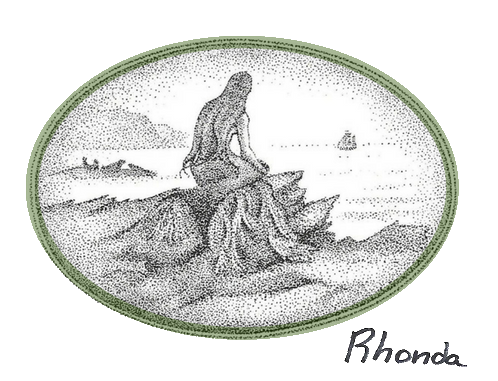
'Nowadays, when all life on earth could be ended by the pressing of a few buttons, St Magnus, martyr and peace-maker, emerges as a more powerful and radiant symbol than ever before.'
- George Mackay Brown
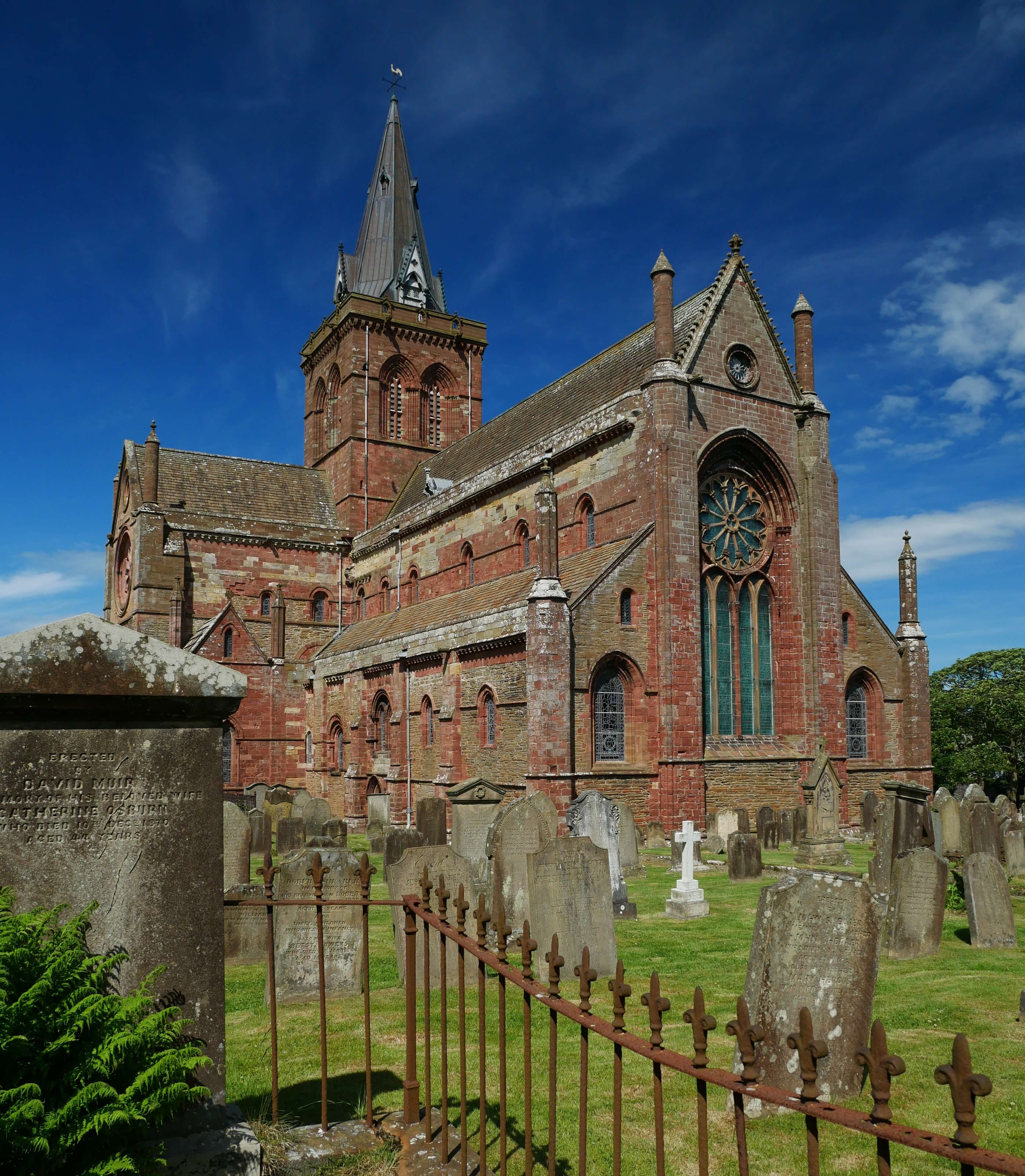
St Magnus Cathedral
This 'fine stone minster' of red and yellow sandstone has been the glowing heart of Orkney for almost 900 years.
During its long history, the cathedral has been used to dry Viking sails and as a prison for accused witches and other 'criminals.' It has played unwilling host to Cromwell's troops and seen more weddings, funerals and burials within its walls than can be known.
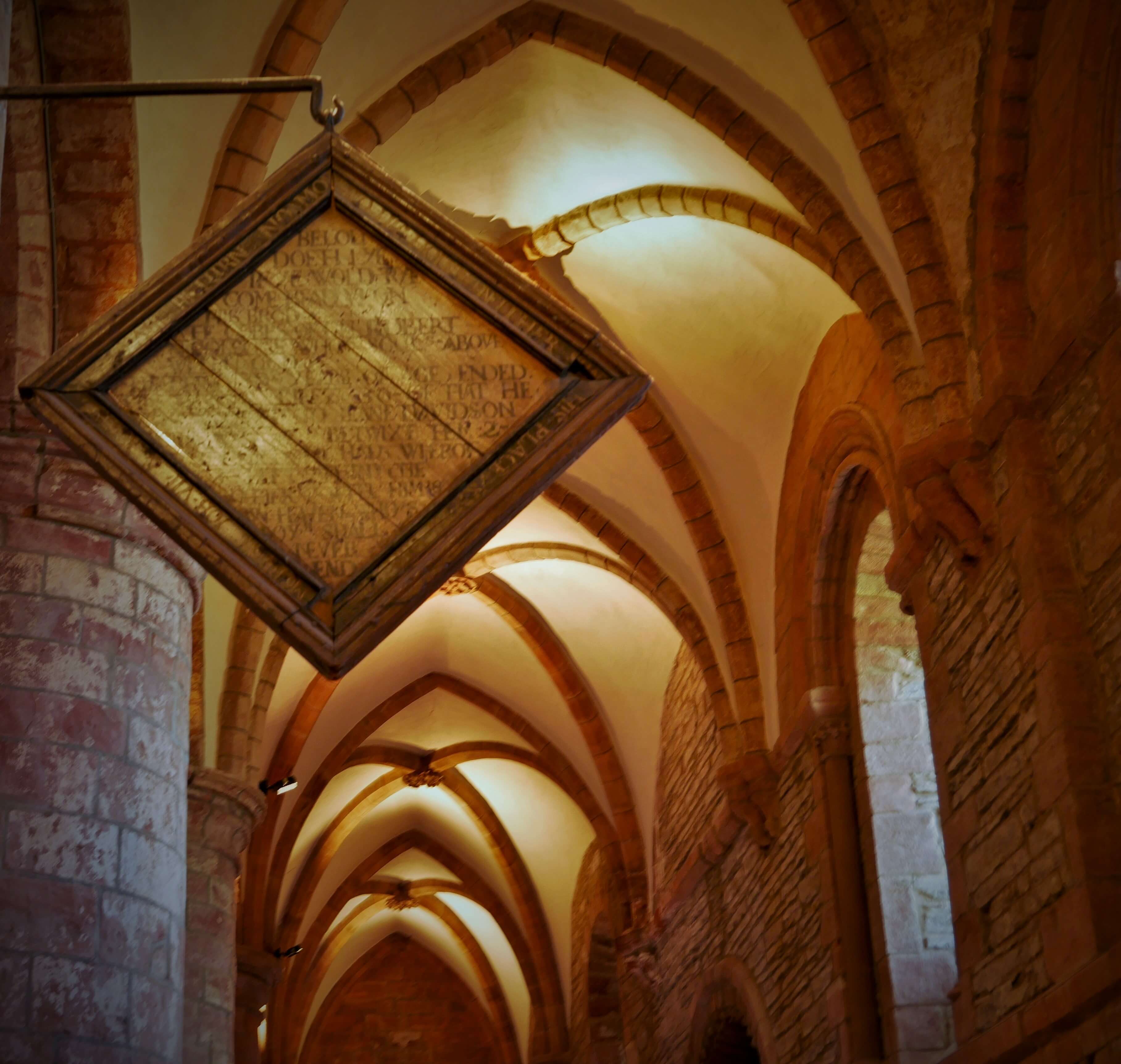 The Mort Brod
The Mort BrodA place of peace and contemplation
Whether you want to explore an inspiring edifice, investigate centuries of history or just sit quietly for awhile in this beautiful place steeped in peace and worship, you are welcome.
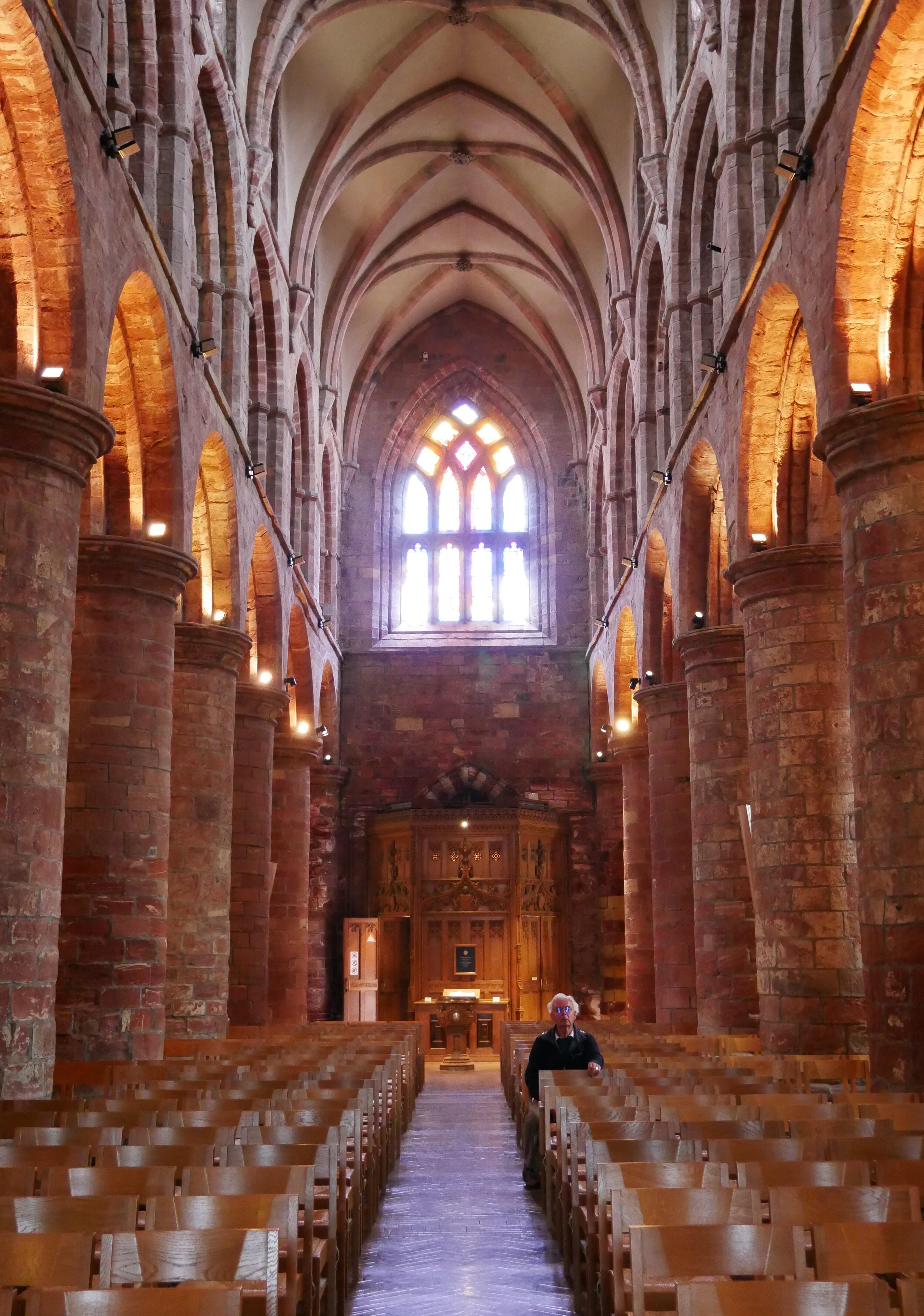
What's on this page?
When Vikings build a cathedral - the history
Who were the cathedral-builders?
You might be asking yourself, who built St Magnus Cathedral all those centuries ago?
Hint: It's the same bunch who carved the graffiti runes inside Meashowe.
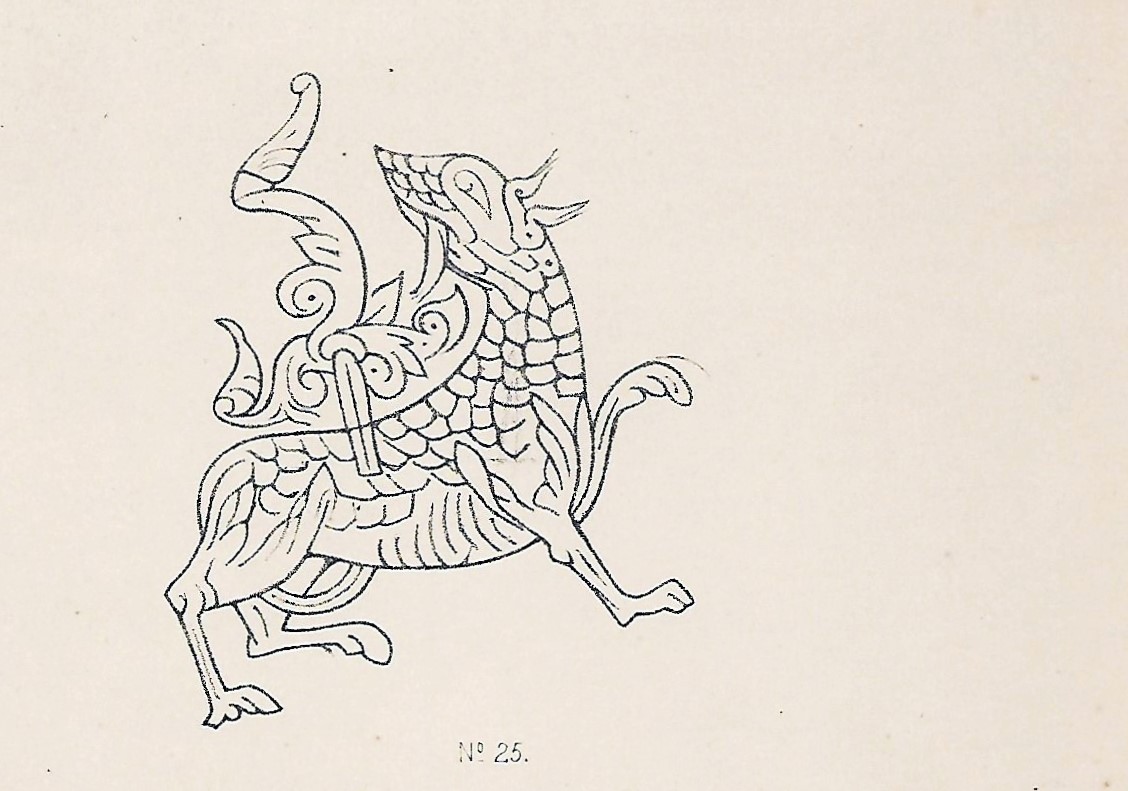
Did you guess Vikings? You're right! Medieval Vikings in Orkney considered themselves Christian.
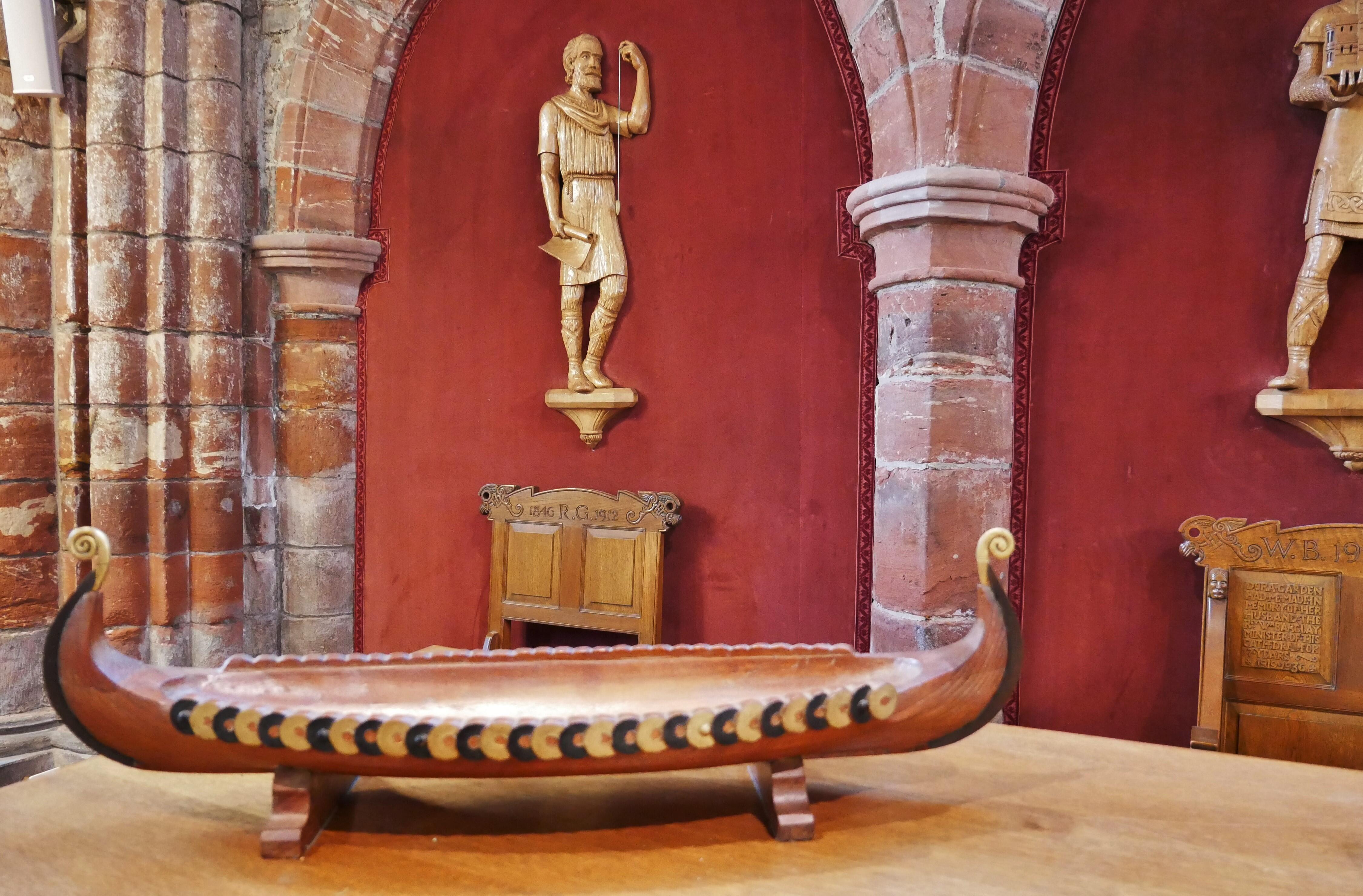
Tom will tell you about these complex and warlike cathedral-builders.
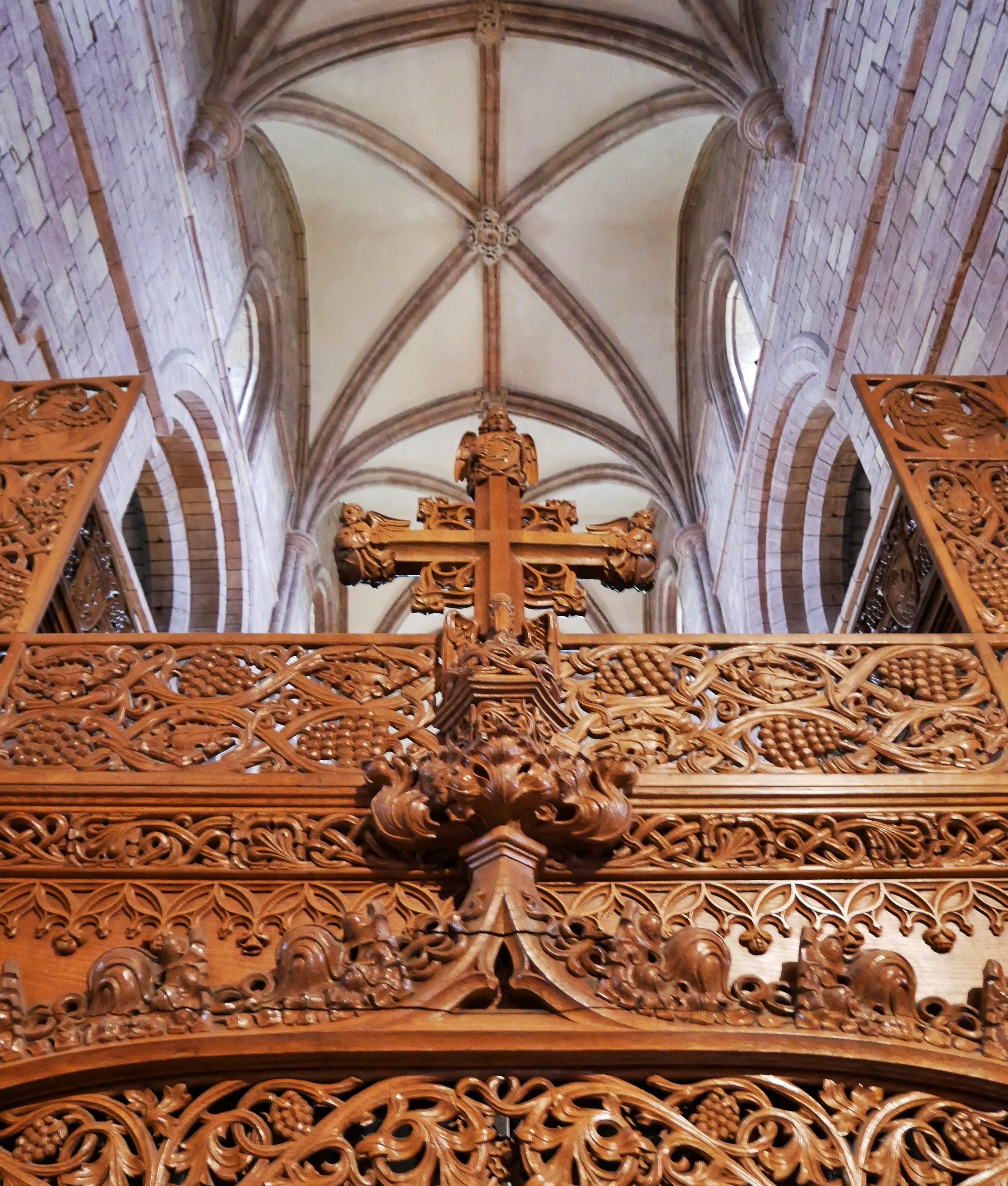

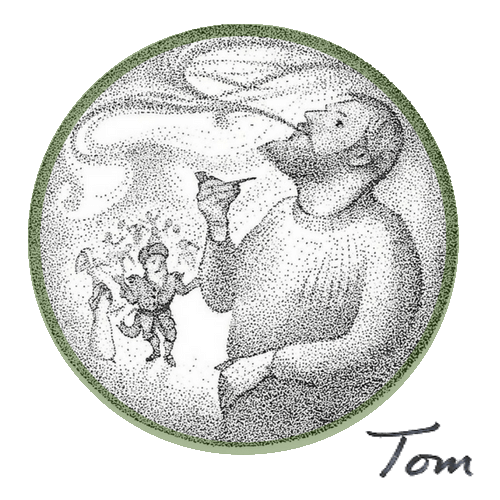
A tale of two Magnuses ...
In 1098, the longship of King Magnus Barelegs lay off Anglesey in Wales.
It was at this time that Magnus Erlendsson (later to become St Magnus) secretly escaped, avoiding the king's wrath for having refused to fight in battle.
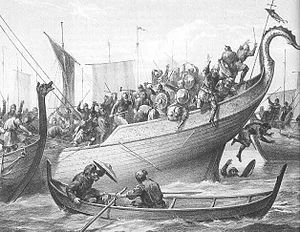
The irate king turned his raiding northwards towards the Hebrides.
Knowing that men were deserting King Magnus to return home to their farms, the king's dying friend and most trusted adviser, Kali Snæbjarnarson, advised him to take a roll-call of his followers.
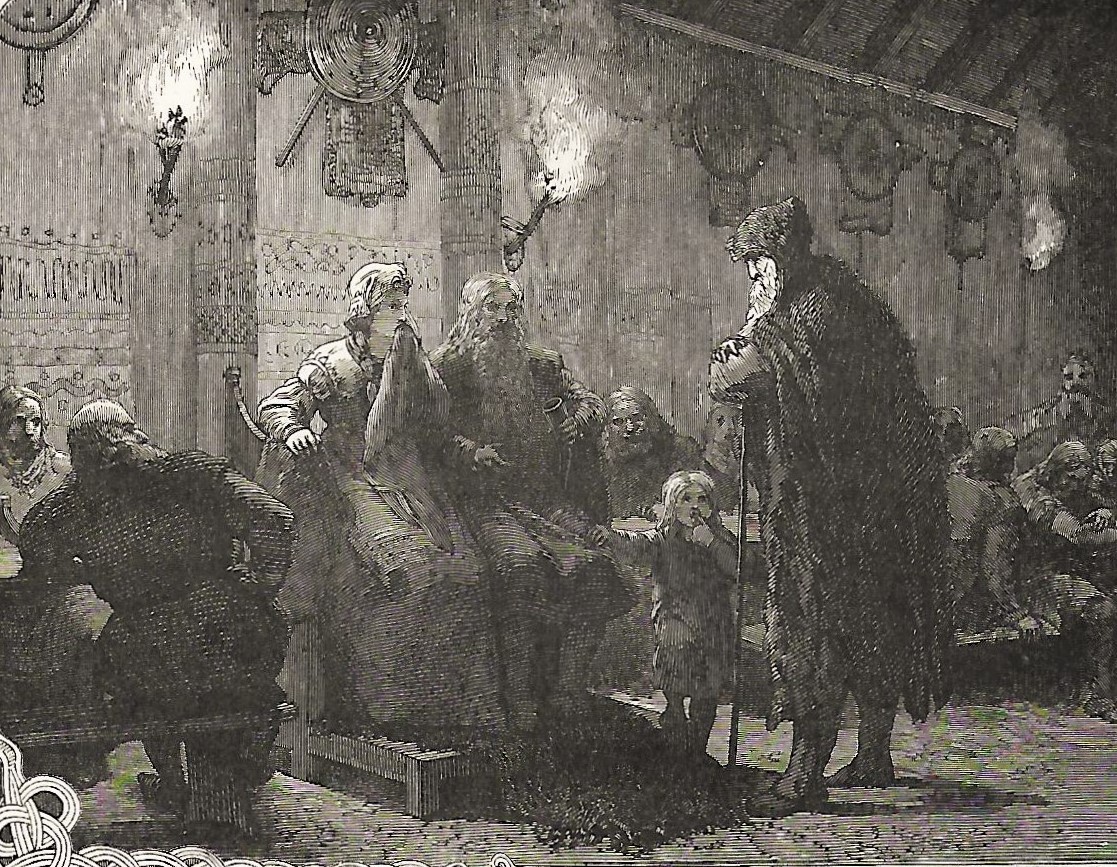
The king followed Kali's advice and found many men missing.
Kali soon died from battle wounds. King Magnus Barelegs honoured the memory of his dead advisor by arranging a good marriage for Kali's son, Kol.
The king gave Kol the daughter of Earl Erlend of Orkney. Gunnhild was her name. She was a sister of (Saint) Magnus Erlendsson.
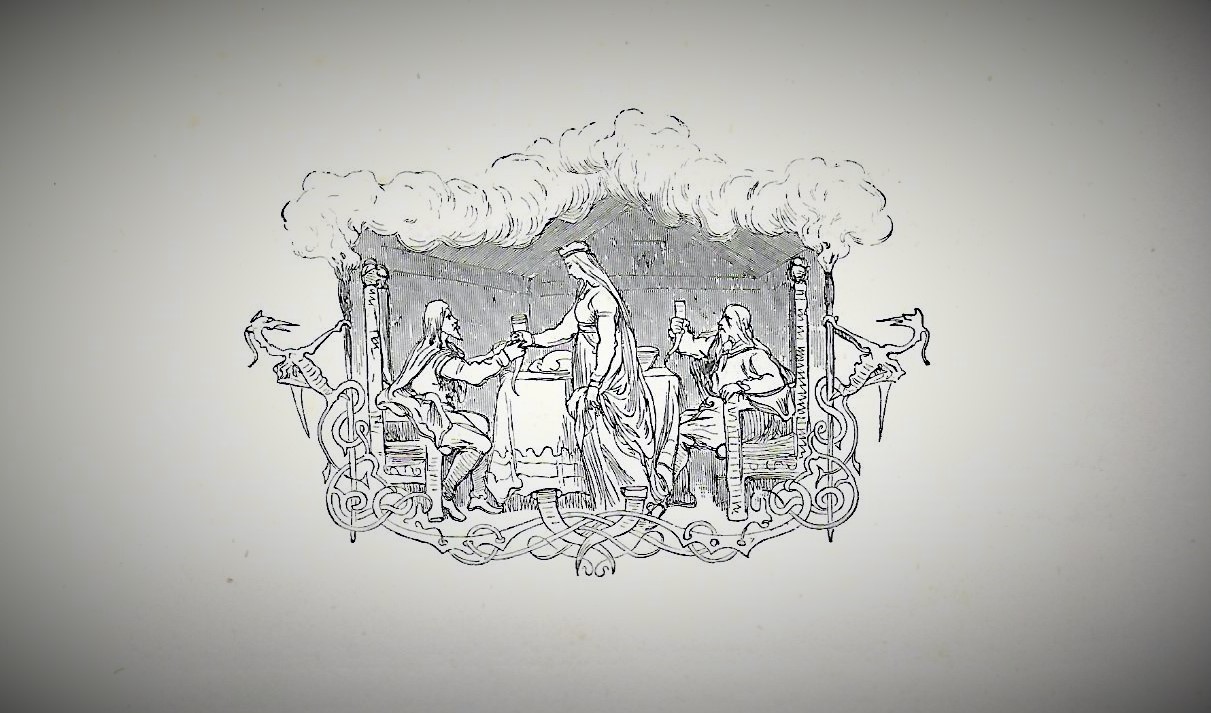
The couple settled in Agdar, Norway where Kol held land. There they had two children: a son, who they called Kali, and a daughter, Ingirid.
You can listen to the full tale of Saint Magnus here. The story of the cathedral-builders continues ...
Kali, the now-grown son of Gunnhild and Kol, renamed himself Rognvald Kali Kolsson - 'Rognvald' after an admirable warrior earl from Orkney's history.
After the martyr's death of his uncle Magnus, Rognvald sent envoys to Orkney to ask for the right to rule his uncle’s half of the earldom.
Earl Paul was the son of Earl Hakon, who had killed Magnus. Predictably, Earl Paul refused to share rule of the islands with Rognvald, his kinsman.
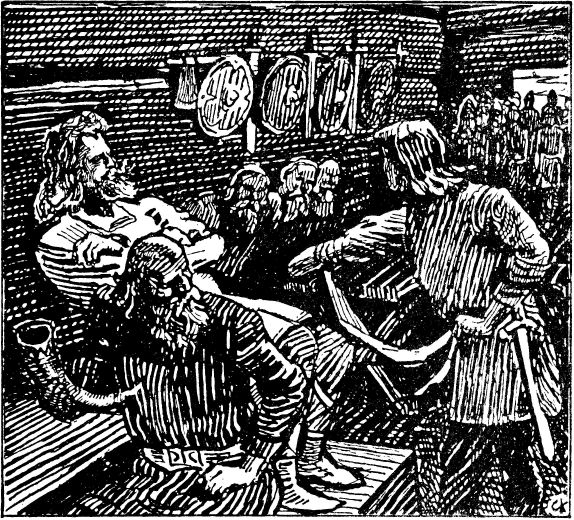
Undaunted, the envoys travelled to Sutherland to enlist the support of another rival claimant to Orkney - Olvir Brawl, with whom Rognvald proposed to share power.
Olvir gathered twelve longships and sailed to Orkney at midsummer, 1135. But Earl Paul defeated Olvir's battle fleet off Tankerness in Orkney's East Mainland.
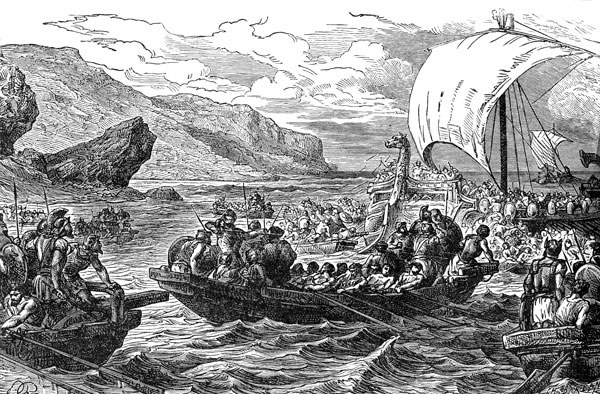
Having defeated Olvir, Earl Paul sailed to Shetland, where Rognvald had landed with a fleet of ships.
Earl Paul’s attack came so suddenly that Rognvald and his men were still ashore when Paul's fleet arrived. Rognvald's ships were easily captured.
Rognvald challenged Paul to come ashore and fight, but Paul thought that the Shetlanders were too well disposed towards Rognvald, and refused. Paul taunted Rognvald to find some ships and come out and fight.
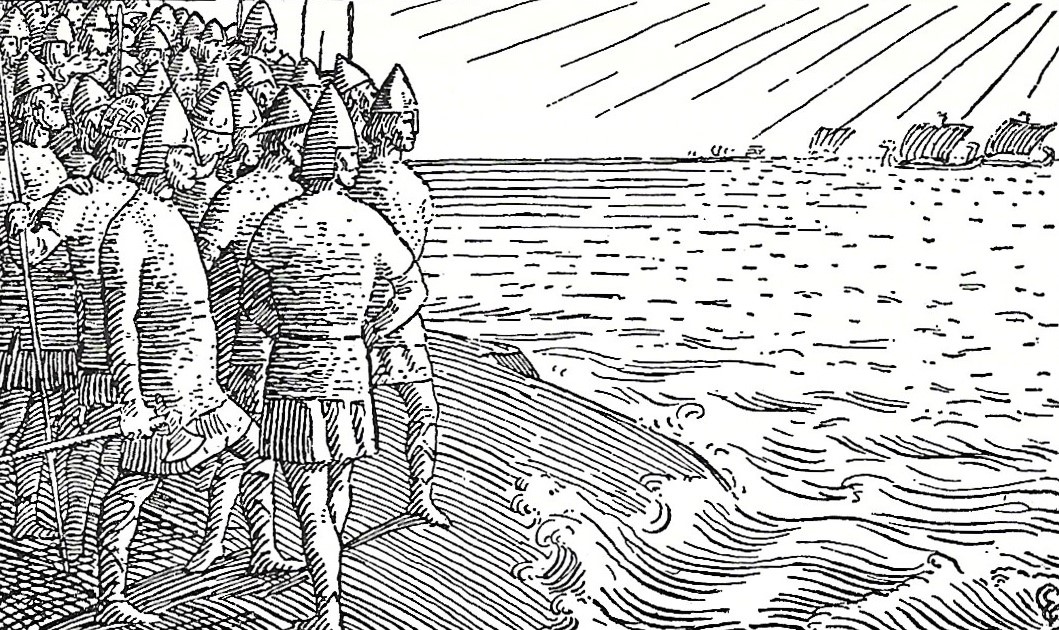
The triumphant Paul sailed back to Orkney with all the captured ships, as well as all Rognvald's money.
It was a disaster for Rognvald, who returned home later in the year ... on a merchant ship.
Now, Rognvald’s father, Kol, was a wise man. He reassured his son that all was not lost, for Kol had secured the good will of the Shetlanders. Further, Rognvald could look to his saintly uncle Magnus for help.
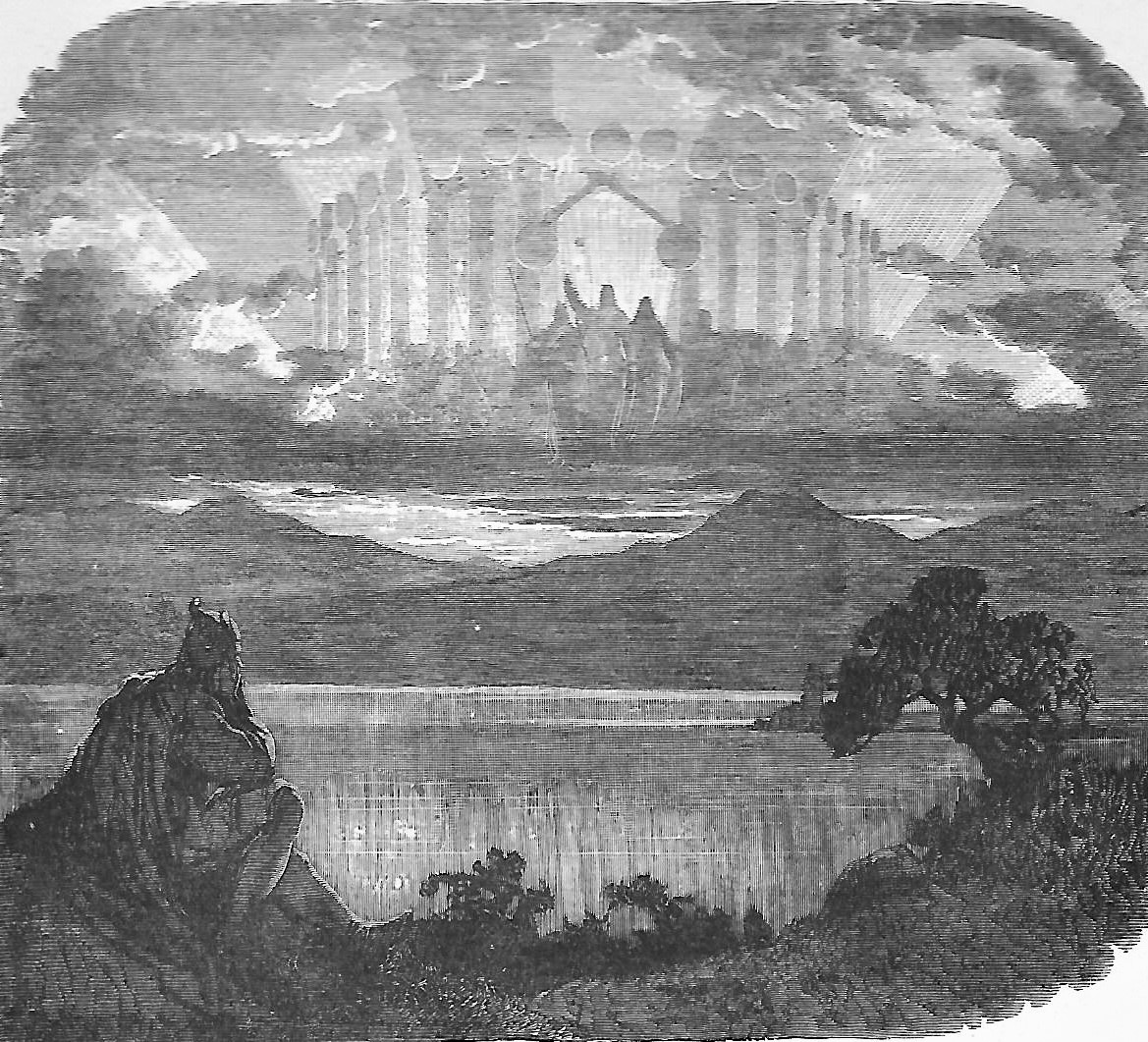
Kol advised Rognvald to vow that he would build a fine stone minster in Kirkwall, promising to dedicate it to St Magnus in return for the earldom he sought.
Rognvald did as his father said. He swore the oath to St Magnus and sailed west once more, landing in Shetland, where he received a warm welcome.
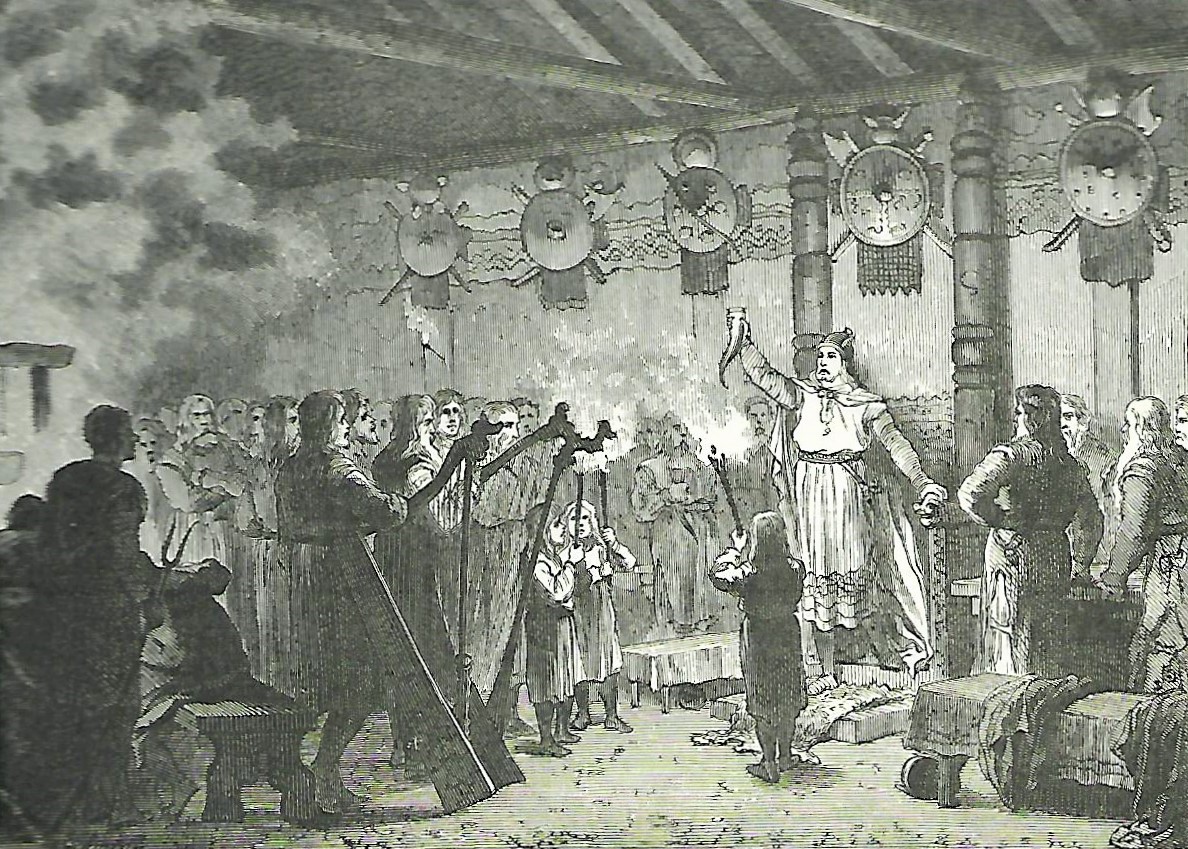
But Earl Paul had not been idle during the winter. He'd organised a series of warning beacons, built at the peaks of all the highest ground in the islands.
These ‘ward’ fires, like so much of our Viking history, have left their mark in Orkney. Today, many local place names of ‘Ward Hill’, or ‘Wart’ remain. These were old beacon sites.
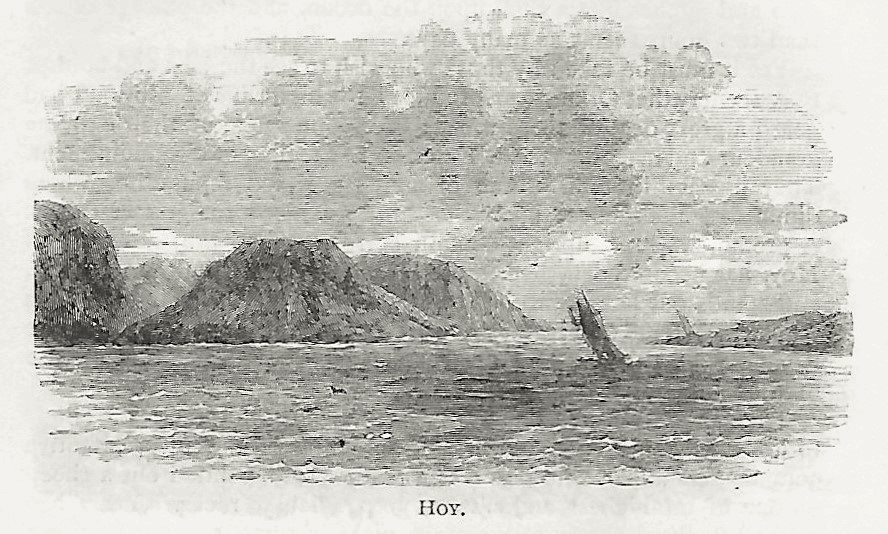
Paul knew that the threat of invasion would come from Shetland. The ward beacon on Fair Isle - half way between Orkney and Shetland - was of huge importance.
Unfortunately for Earl Paul, Rognvald was able to sabotage this beacon and slip past without warning.
A temporary truce was proclaimed between the two until the tides and winds became favourable for sailing, at which time they would meet in battle.
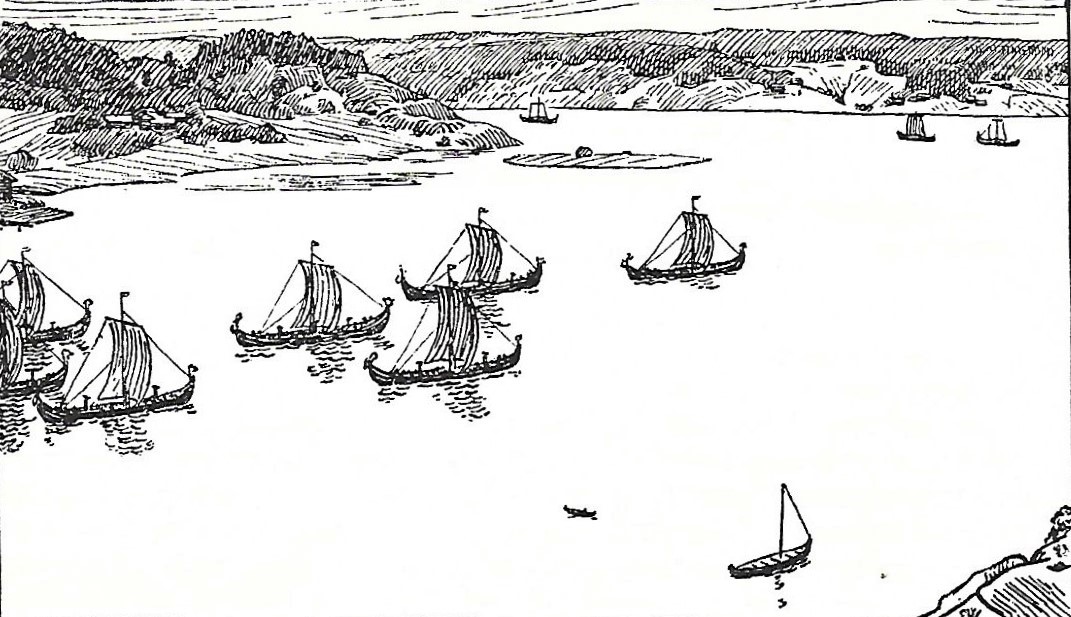
This was the beginning of a bad time for Paul.
The previous Yule he had outlawed a young chieftain called Sven Asleifarson for murdering one of Paul's senior warriors.
Seeking revenge, Sven returned to Orkney secretly and captured the earl while he was hunting otters in the west of Rousay.
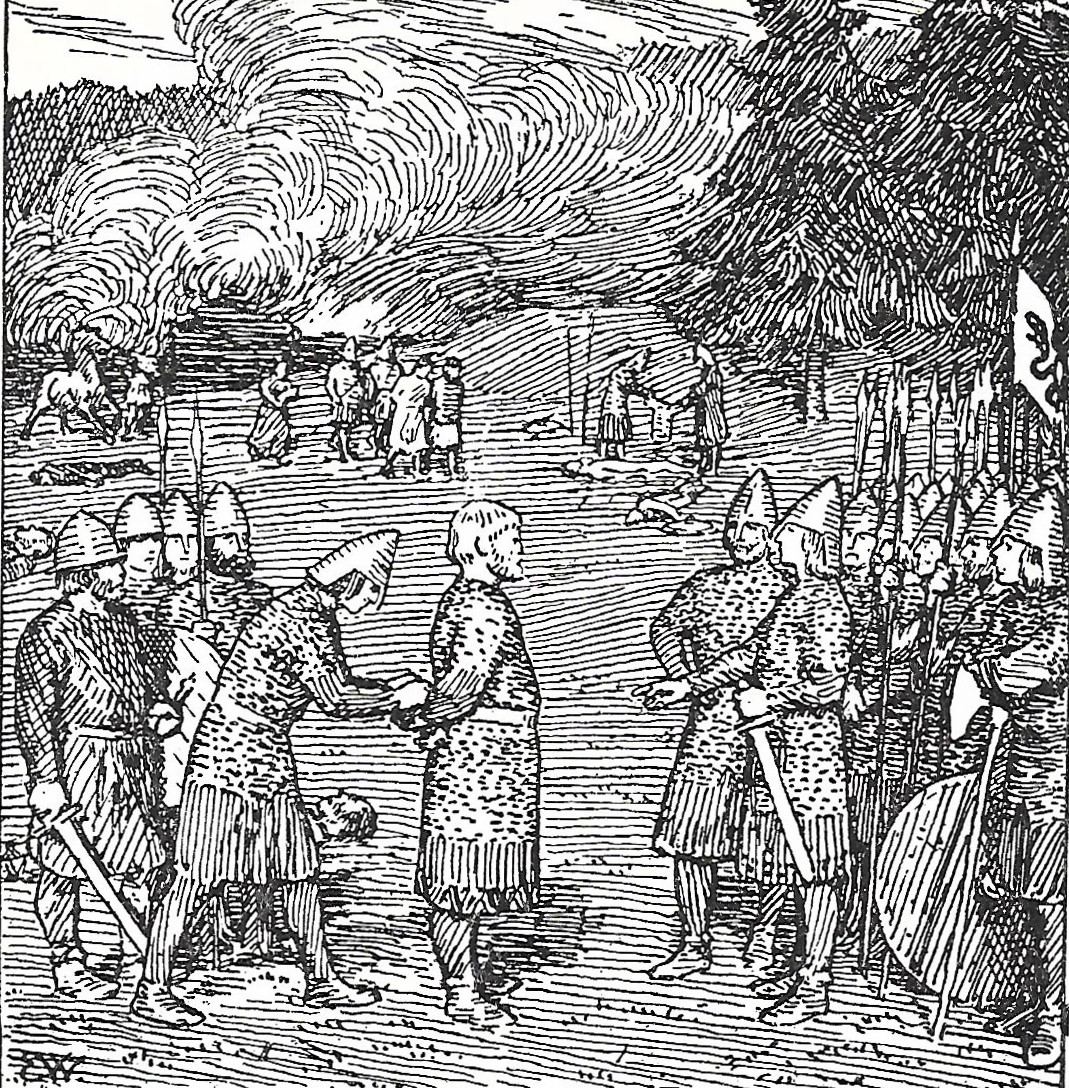
Earl Paul was captured and taken south to the home of Paul's half-sister, Margaret, who was married to the Earl of Athol.
There was no love lost between the siblings. Paul was imprisoned, blinded and later put to death so that Margaret’s son, Harald Maddadarson, could inherit his uncle Paul's half of the earldom.
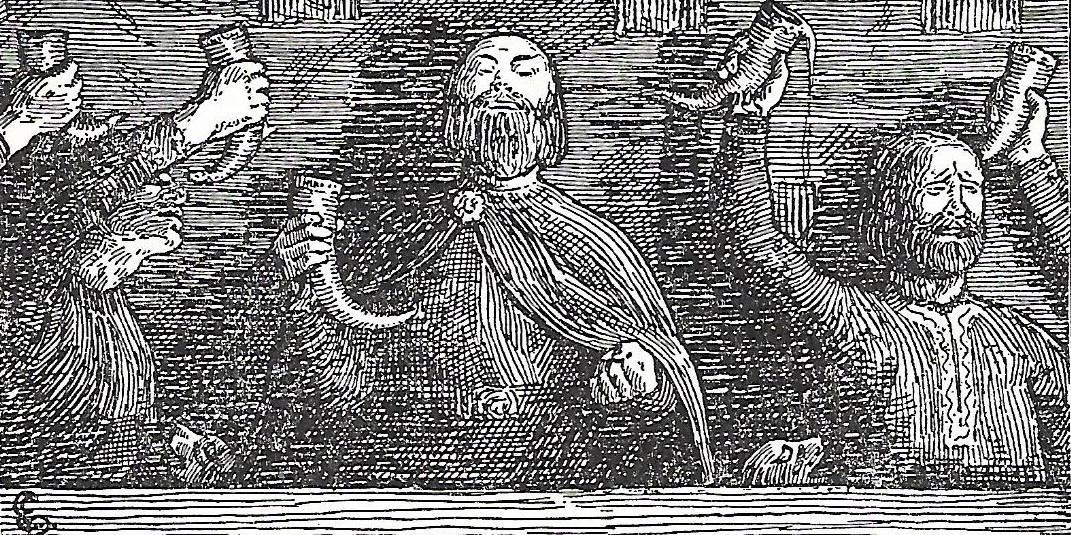
Press the arrow below, and I'll tell you the story of St Magnus.
Meanwhile, back in Kirkwall ...
St Magnus Cathedral was built under the supervision of Rognvald's wise father, Kol, beginning in 1137.
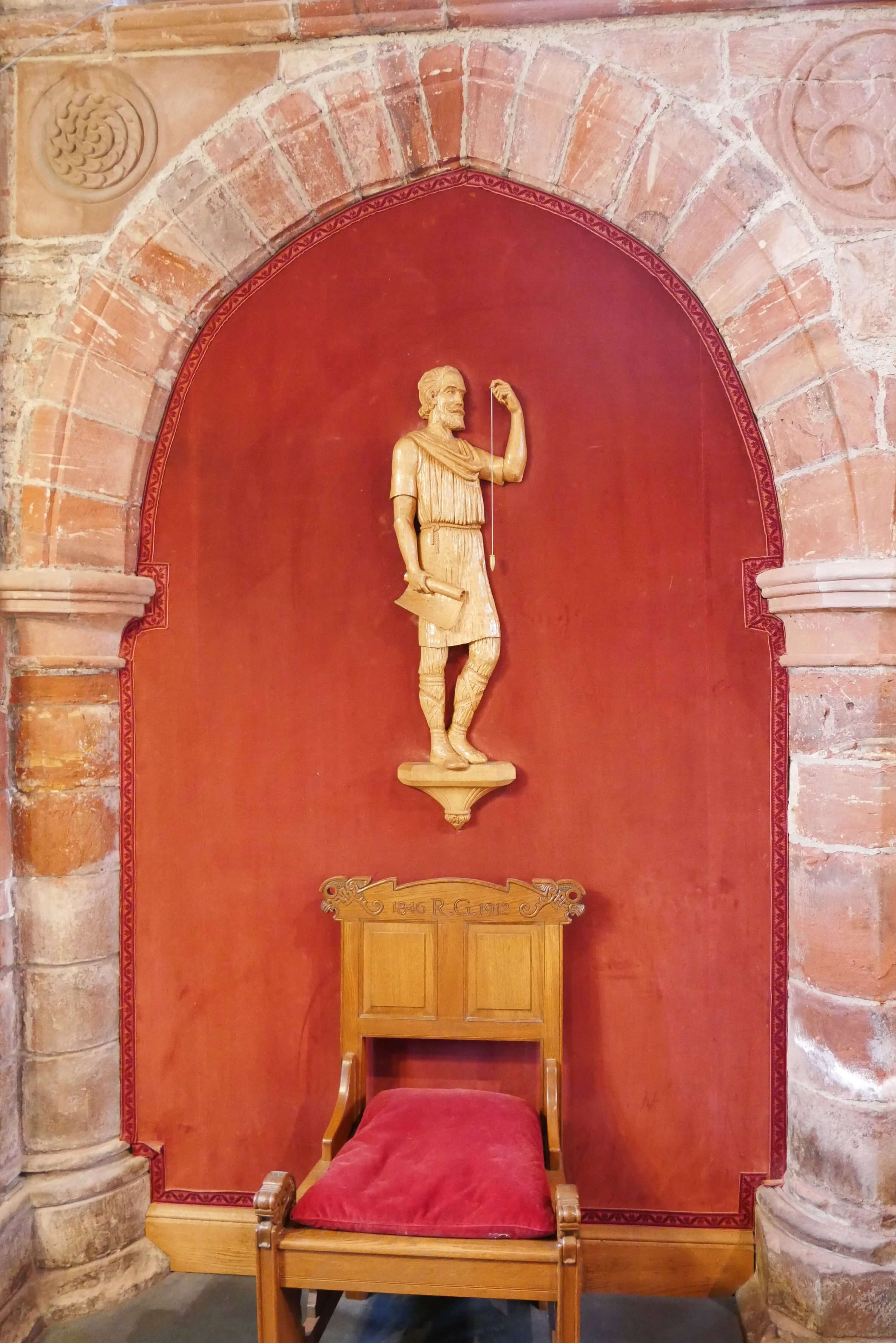
In the 13th century the cathedral was extended to the east. Work on the building progressed slowly.
Changes were still being made throughout the 14th and 15th centuries.
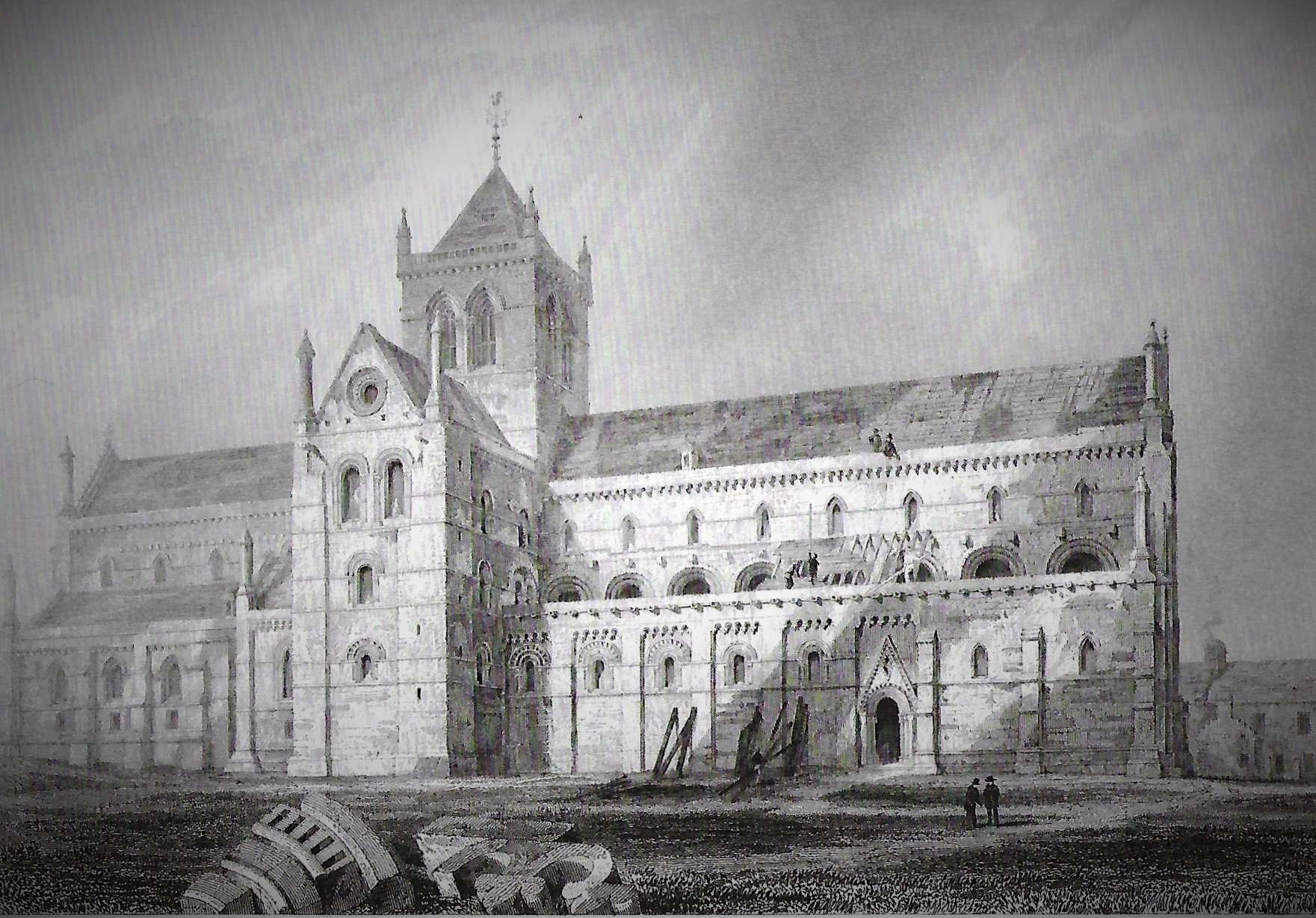
The supporting pillars at the west end were originally built outside, but the work slowed to the point that a temporary gable was needed to enclose the building.
The pillars remained outside, exposed to the elements, as they waited for the extension to be completed.
Weathering can still be seen on some of the inside pillars at the west end, near the door.
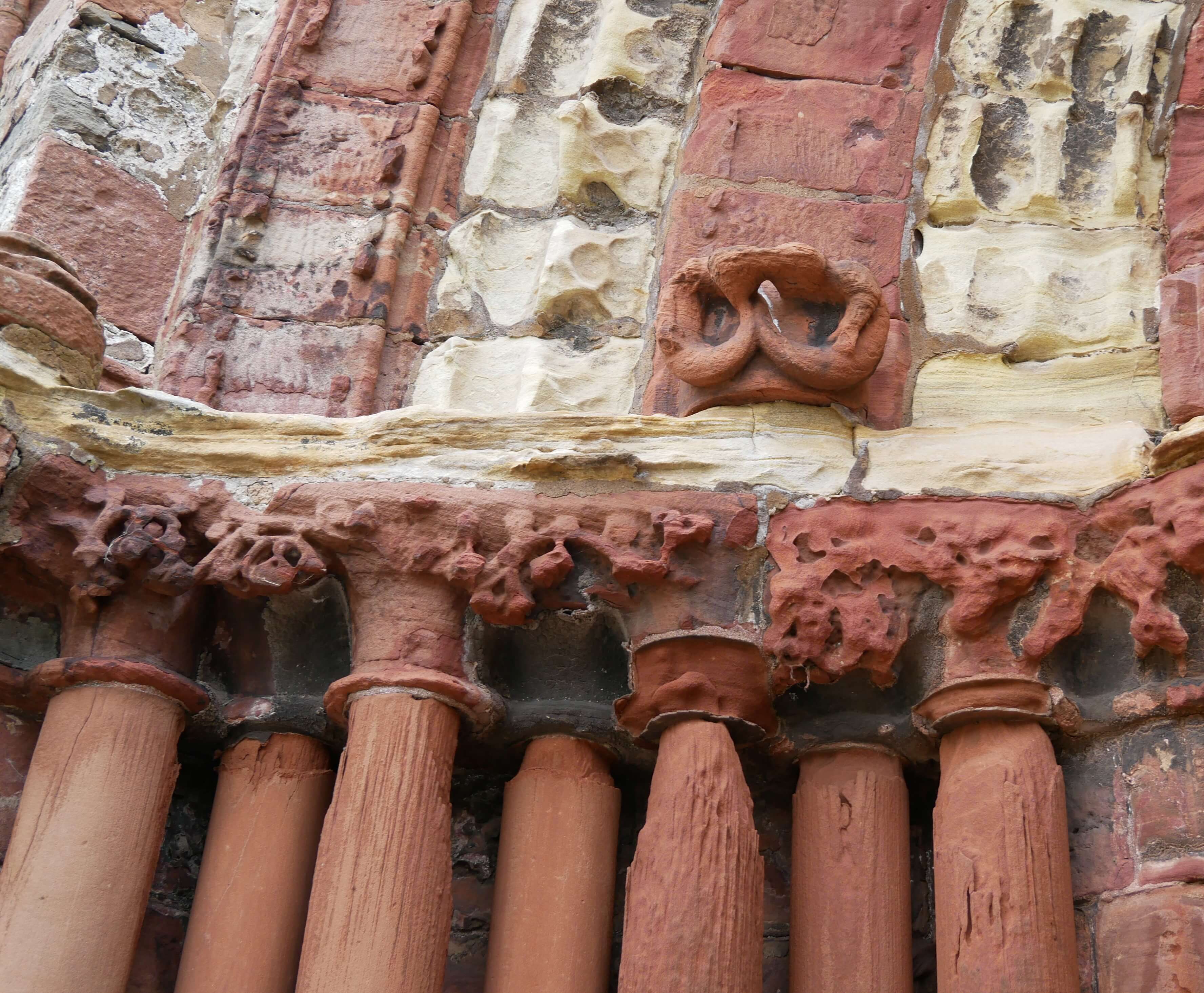 These pillars at the entrance show what Orkney's blasting winds can do to sandstone.
These pillars at the entrance show what Orkney's blasting winds can do to sandstone.One plan for improvement was to have two towers built on either side of the west doorways.
This was abandoned, probably from a combination of the prohibitive cost and unfavourable geology. The bedrock slopes steeply down, towards the waters of the Peedie Sea, making the foundation of the proposed towers precarious.
(At that time, the Peedie Sea came all the way up to Broad Street, almost as far as the cathedral.)
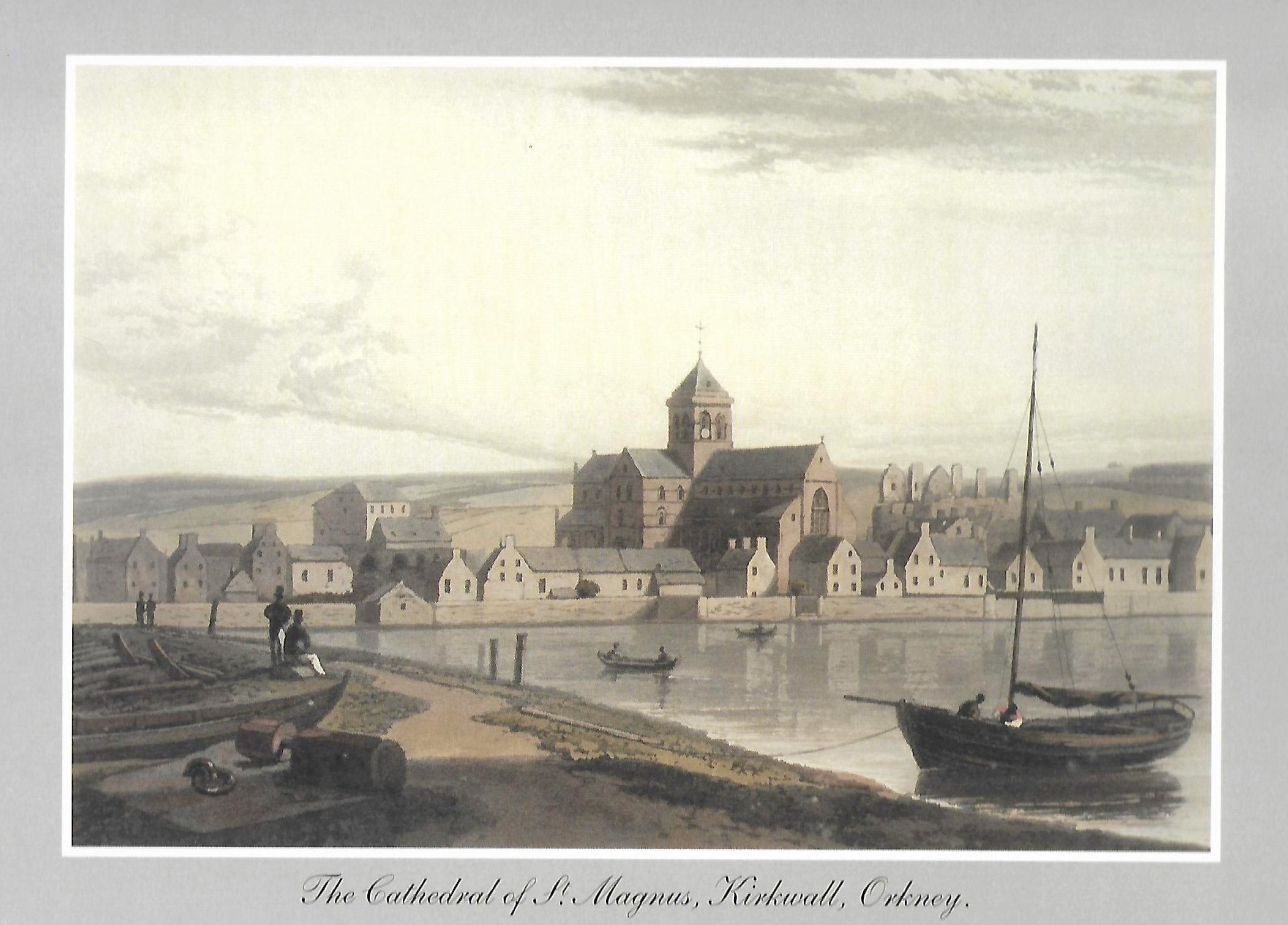
King James III of Scotland granted a charter to the City and Royal Burgh of Kirkwall in 1486. The charter transferred ownership of the St Magnus Cathedral to “Provost Bailies Dean of Guild Treasurer Council and Community thereof.”
From that point on, St Magnus Cathedral didn't belong to the church but to the people of Kirkwall.
Changes to local authorities in Scotland saw the creation of the Orkney Islands Council in 1975.
The OIC replaced the Kirkwall Town Council. Technically, the cathedral is now owned by the people of Orkney ... though many Kirkwallians may not agree.
St Magnus Cathedral is the only cathedral in Scotland to still contain the bones of its patron saint.
The bones of Magnus and Rognvald had been hidden inside pillars for their protection during the Reformation. Otherwise, they would have been destroyed.
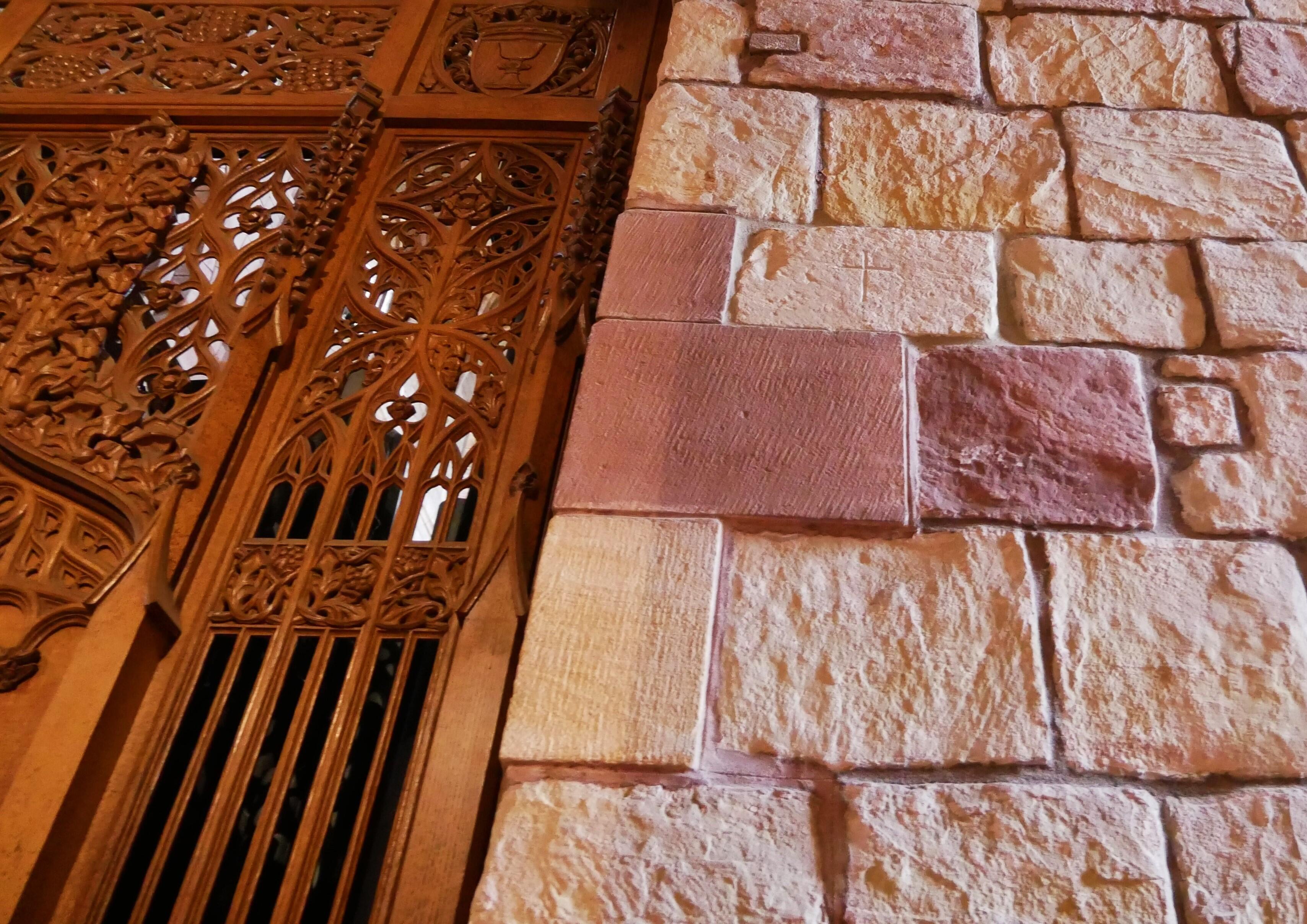
This magnificent cathedral remains the jewel in Orkney’s crown.
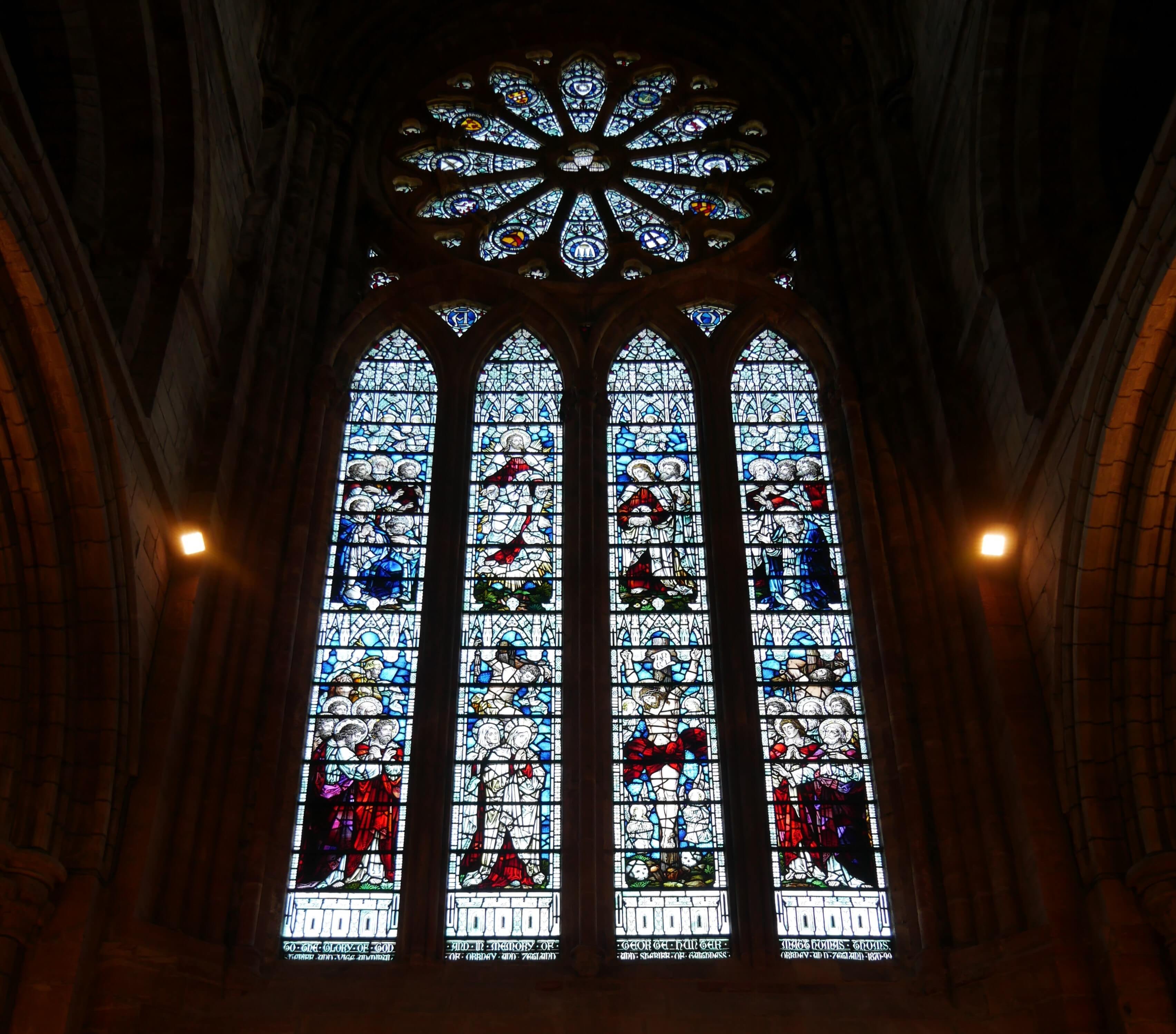

Visiting our cathedral
St Magnus Centre
If you have time, stop in here to watch the short film, 'Saga of St Magnus.' It is recommended that you watch the film before visiting the cathedral, to enhance your visit.
To get to the centre, walk up the hill past the cathedral's cemetery, and you'll come to the St Magnus Centre on your left.
There are toilets and a lovely view in the sitting area, where you can take a breather.
For a small donation, you can make yourself a cup of something hot and buy a wee snack.
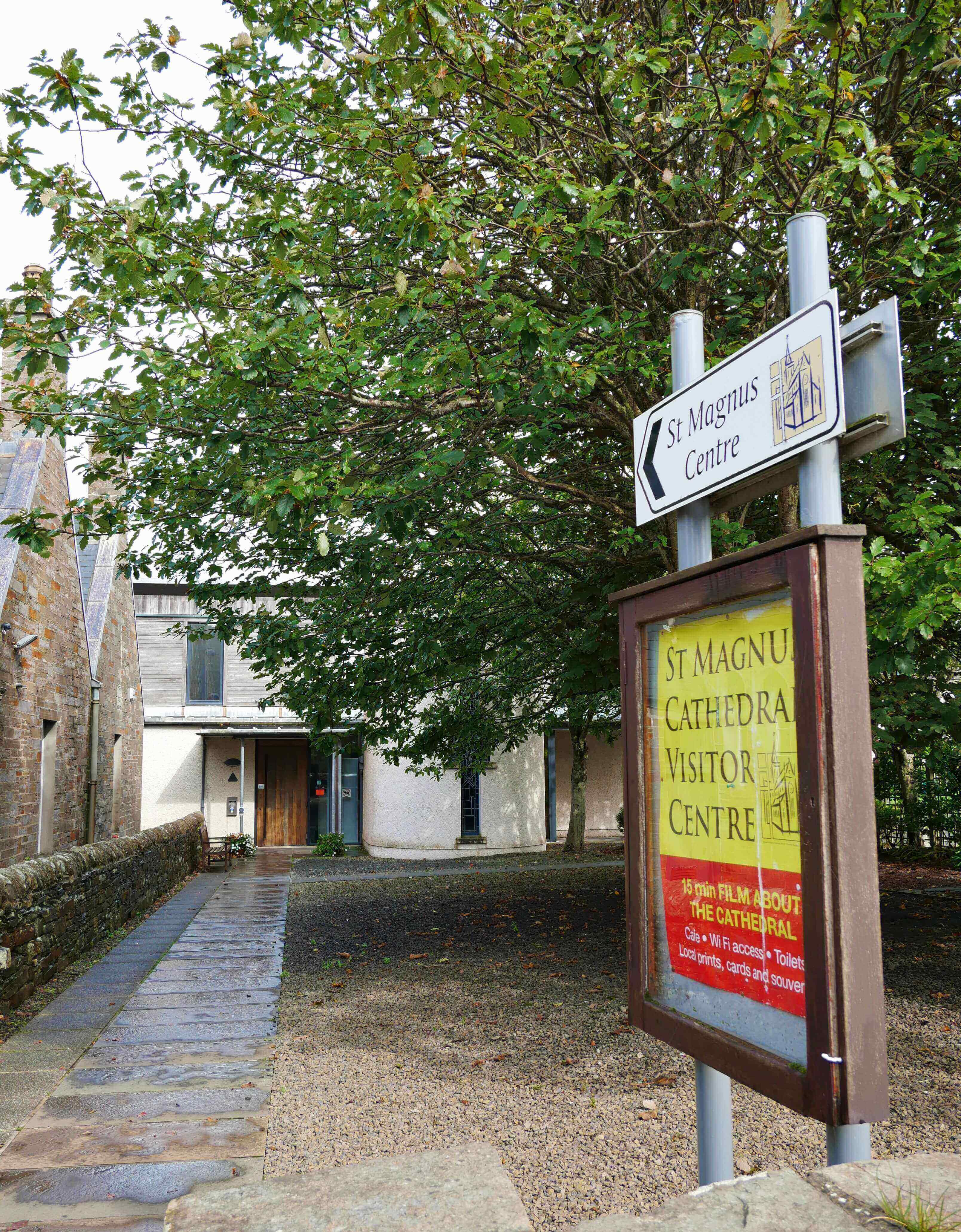
A community affair
The building which has witnessed so much of Orcadians' griefs and joys appropriately is also used for community events, such as weddings, baptisms and funerals.
Lectures, special services and all manner of high-quality frivolity also take place in the cathedral. It's used as a concert venue, especially during the St Magnus Festival in late June.
Attend a concert in the cathedral, if you get the chance. The acoustics are ethereal.
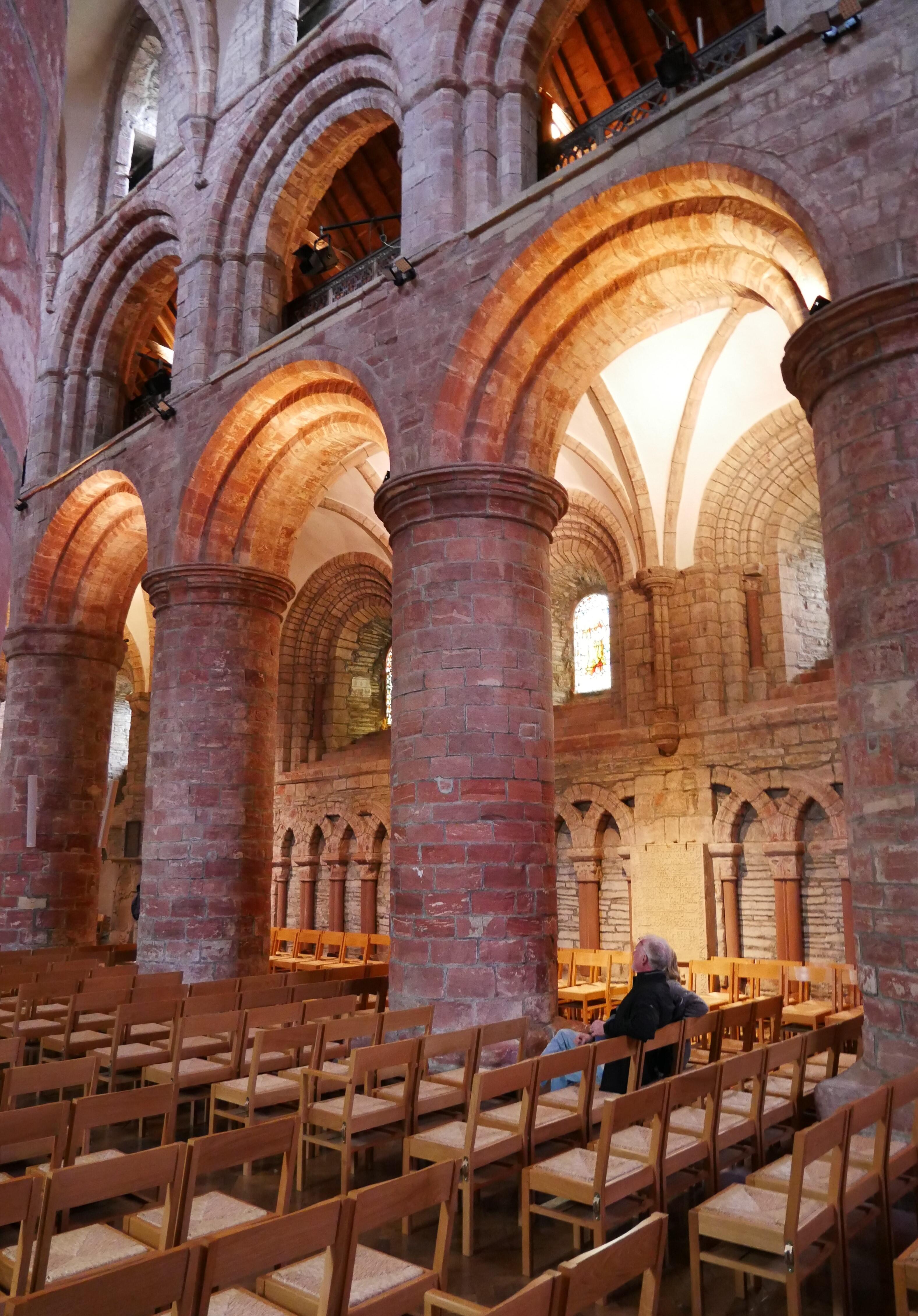
You can hear a short sample of the haunting 'Hymn to St Magnus' sung by the St Magnus Cathedral Choir on the 900th anniversary of his martyrdom here.
A matter of courtesy
Please do remember that St Magnus Cathedral is a functioning church. As such, it will be closed briefly at times for private events and concerts.
Especially in the event of funerals, the most gentle courtesy is urgently requested of visitors.
Our cathedral is an ancient and sacred space, deserving of the greatest dignity and respect, as are the people who live and die in Orkney.
Hidden spaces in St Magnus Cathedral
You can book a tour of the upper levels of the cathedral on Tuesdays and Thursdays, at 11.00 and 14.00 (2 pm). Book your tour with the Custodian by calling: 01856874894.
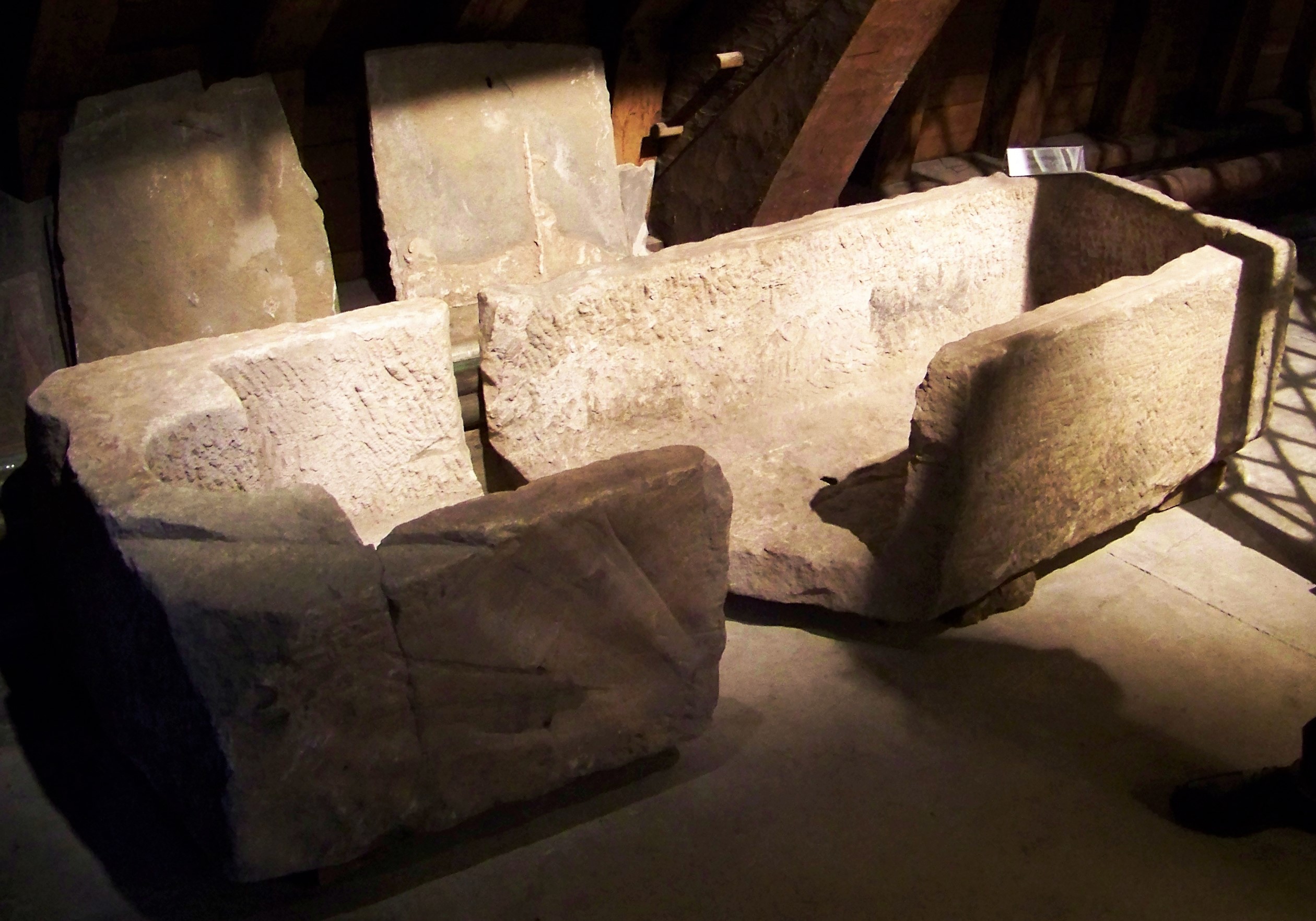
You'll have to climb narrow stairs. Obviously, this tour probably isn't a good idea for anyone who has a problem with heights.
Get the app at the door
An app is now available at the front door as an audio-visual tour that you can access on your phone or tablet.
The cathedral does not supply the earbuds or headphones that you'll need to get the full experience.
Worship in the cathedral
St Magnus Cathedral is an active Christian church, belonging to the people of Orkney. Visitors of any denominational background (or none) will find a welcome atmosphere in the Sunday worship. Coffee and tea are shared after the service.
For worship times and details, visit the St Magnus Cathedral website.
* Please note that in the winter season, St Magnus Cathedral is closed for lunch between 13:00 and 14:00 (1:00 pm - 2:00 pm).
* Also, on very windy days the west door (main entrance) is closed. You'll be directed to a side door.
We hope you enjoy your visit to our enchanting cathedral.


'Saint Magnus the Martyr accepts the flame. He touches it to immortality, a hard diamond. The radiance he reserves, to give back again where it is needed.'
- George Mackay Brown

* Quotes by our beloved Orcadian poet, George Mackay Brown, from his book, The Loom of Light

Mermaid image (Rhonda's pages) and storyteller image (Tom's pages), and all other illustrations except where noted are here by the courtesy of our dear friend - Stromness author, artist and historian, Bryce Wilson MBE, who owns all copyrights. Thanks, Bryce!

